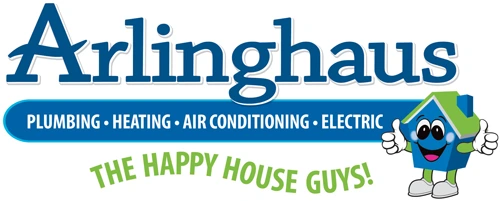We all love the comfort of a warm, cozy home when the temperature outside starts to drop. There’s nothing quite like coming inside, kicking off your boots, and feeling the heat kick on after a cold day. But while that warmth feels great, it’s important to remember that the furnace providing it needs to be taken care of to make sure it operates safely and efficiently.
So, how can you protect your furnace and your family? By following these simple furnace safety tips, you can keep your heating system in top shape and your home safe all winter long.
1. Schedule Annual Furnace Maintenance
One of the simplest and most effective furnace safety tips is to schedule annual maintenance for your furnace. Getting your furnace inspected by a professional HVAC technician at least once a year can prevent a wide range of issues that might otherwise go unnoticed. During a maintenance visit, the technician will check important components like the heat exchanger, blower motor, and pilot light to make sure your furnace is functioning properly.
Regular maintenance can extend the life of your furnace and guarantee its safe and efficient operation. A well-maintained furnace runs more efficiently, uses less energy, and saves you money on your heating bills. It also reduces the risk of breakdowns and major repairs during the coldest months of the year.
If you’re looking for heating services in Erlanger or Cincinnati, don’t hesitate to schedule annual maintenance with Arlinghaus. We follow all preventive measures for furnace safety and will keep your system running at peak efficiency.
2. Install Carbon Monoxide Detectors
A critical step in protecting your family is installing carbon monoxide detectors. Carbon monoxide is an odorless gas that can be deadly if it leaks into your home from a malfunctioning furnace or other heating equipment. Because this gas is so dangerous and hard to detect without the right equipment, installing carbon monoxide detectors near your furnace room and in other key areas of your home is essential.
Why Carbon Monoxide Detectors Are Important
Your gas furnace produces heat by burning natural gas, and if there’s incomplete combustion in the furnace’s combustion chamber, carbon monoxide can be released. Carbon monoxide poisoning can cause symptoms such as headaches, dizziness, confusion, and, in severe cases, death. By having carbon monoxide detectors installed, you’ll be alerted if any dangerous levels of this gas are detected, giving you time to evacuate and seek help.
For added peace of mind, you can have a technician inspect your furnace and its exhaust system to confirm that there are no carbon monoxide leaks. It’s also a good idea to test your carbon monoxide detectors regularly to make sure they’re working properly. Ultimately, installing and testing your carbon monoxide detectors is one of the most important furnace safety tips if your system runs on natural gas.
3. Keep the Area Around Your Furnace Clear
Many homeowners store items around their furnaces without realizing the potential fire hazard this poses. It’s important to keep at least three feet of clear space around your furnace at all times. Flammable materials like cardboard boxes, paper, or cleaning supplies should never be stored near your furnace or heating equipment. Even if your furnace operates efficiently, clutter around it can block proper airflow and increase the risk of fire.
Additionally, blocking the furnace room or furnace air intake can cause poor ventilation, which may lead to issues like incomplete combustion or higher carbon monoxide levels. By keeping the area around your furnace clear, you’re promoting both safe and efficient operation while reducing fire risks.
4. Regularly Replace Furnace Filters
Another one of the most effective furnace safety tips is to regularly check and replace your furnace filter. Over time, dust, dirt, and other debris can accumulate in your furnace’s air filter, restricting airflow and causing your furnace to work harder than it needs to. This can reduce the energy efficiency of your heating system and also pose a safety risk by causing the furnace to overheat.
Replacing the air filter every one to three months can significantly improve indoor air quality and keep your heating system working efficiently. A clean filter allows for proper airflow, which helps prevent overheating and reduces wear and tear on your furnace’s components. If you have pets or allergies, you may need to change your furnace filter more frequently to keep your home’s air clean.
5. Monitor for Furnace Warning Signs
Your furnace will often give you warning signs when something is wrong, and being aware of these signals can help you catch problems early. Some common furnace warning signs to watch out for include:
- Strange noises like banging, rattling, or screeching.
- A burning smell or gas odor coming from the furnace.
- The pilot light going out frequently or burning a yellow flame instead of blue (this can indicate a gas leak).
- Increased energy bills without a change in heating usage.
- Inconsistent heating or cold spots in your home.
If you notice any of these issues, it’s important to call a professional HVAC technician immediately. These signs could indicate a problem with the furnace’s combustion chamber, gas supply, or other important components, and addressing them promptly can prevent more serious issues from developing.
Regularly inspecting your furnace for warning signs and scheduling repairs when necessary are key steps to keeping your home safe.
Carbon Monoxide and Gas Furnace Safety
Carbon monoxide (CO) is a byproduct of burning fuel, and it’s a serious safety concern when using gas furnaces. Modern furnaces are equipped with safety features that reduce the risk of carbon monoxide leaks, but issues like poor ventilation, a cracked heat exchanger, or an obstructed flue pipe can cause dangerous levels of CO to accumulate in your home.
The danger of carbon monoxide poisoning is real, but with the right preventive measures for furnace safety, you can minimize the risk. Here’s how you can protect your home:
- Make sure your furnace has proper ventilation to allow harmful gases to escape.
- Have a technician inspect the combustion chamber and heat exchanger during annual maintenance.
- Install both carbon monoxide detectors and smoke alarms throughout your home to detect potential dangers early.
By being proactive about gas furnace safety, you can help protect your family from the risks of carbon monoxide poisoning.
Schedule Furnace Maintenance With Arlinghaus!
Your home’s safety and comfort are top priorities, and a well-maintained, efficient heating system plays a big role in that. Whether you need a furnace tune-up, repairs, or even a new furnace installation, Arlinghaus has all your furnace needs covered. Our team of experienced technicians proudly serves Erlanger, KY, Cincinnati, OH, and the surrounding areas. We’re here to keep your heating system running smoothly and safely throughout the winter months.
Now that we’ve reviewed preventive measures for furnace safety, don’t wait for a problem to arise before getting your furnace serviced. Schedule annual maintenance with Arlinghaus today to keep your family warm and safe this season!


